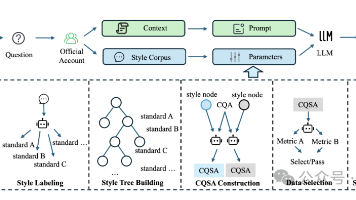【Python】Edge TTS(文本转语音库) :微软新一代文本转语音引擎
文本转语音
·
Edge TTS :微软新一代文本转语音引擎(注意:Edge TTS使用需要联网)
Edge TTS 是微软基于其 Edge 浏览器内置的语音合成技术开发的免费开源库,提供业界领先的神经网络语音合成能力。
核心优势
-
顶级语音质量:
- 使用深度神经网络生成接近人声的语音
- 支持自然的情感表达和语调变化
- 提供媲美商业TTS服务的声音品质
-
丰富的语音选择:
- 支持100+种声音和40+种语言
- 中文提供多种方言和风格选择
- 包含不同年龄、性别和风格的声音角色
-
精细参数控制:
rate="+20%" # 语速调整范围:-50% ~ +100% pitch="+10Hz" # 音高调整范围:-100Hz ~ +100Hz volume="+5%" # 音量调整范围:-100% ~ +100%
安装与配置
# 安装核心库
pip install edge-tts
# 可选:安装播放功能依赖
pip install playsound # 跨平台音频播放
完整使用指南
基础使用:文本转MP3
import asyncio
from edge_tts import Communicate
async def tts_conversion():
communicate = Communicate(
text="微软Edge TTS提供卓越的语音合成体验",
voice="zh-CN-XiaoxiaoNeural", # 选择声音
rate="+10%", # 加速10%
)
await communicate.save("output.mp3") # 保存为MP3
asyncio.run(tts_conversion())
实时语音播放
from edge_tts import Communicate
import asyncio
async def live_tts():
communicate = Communicate(
text="正在实时播放合成语音",
voice="zh-CN-YunxiNeural"
)
async for chunk in communicate.stream():
if chunk["type"] == "audio":
# 此处可连接音频设备实时输出
pass
elif chunk["type"] == "WordBoundary":
print(f"单词边界: {chunk['offset']}ms")
asyncio.run(live_tts())
高级功能:SSML语音标记
ssml_text = """
<speak version="1.0" xmlns="http://www.w3.org/2001/10/synthesis" xml:lang="zh-CN">
<voice name="zh-CN-XiaoyiNeural">
普通语音 <break time="500ms"/>
<prosody rate="fast" pitch="high">加速的高音调语音</prosody>
<prosody volume="loud">强调的重要内容!</prosody>
</voice>
</speak>
"""
async def ssml_tts():
communicate = Communicate(ssml=ssml_text)
await communicate.save("ssml_output.mp3")
中文语音库推荐
| 声音ID | 特点 | 适用场景 |
|---|---|---|
zh-CN-XiaoxiaoNeural |
清晰女声,自然流畅 | 通用解说 |
zh-CN-YunxiNeural |
温暖男声,带幽默感 | 内容创作 |
zh-CN-YunyangNeural |
专业播音腔 | 新闻播报 |
zh-CN-XiaoyiNeural |
年轻活泼女声 | 儿童内容 |
zh-CN-liaoning-XiaobeiNeural |
东北口音 | 方言内容 |
命令行工具技巧
-
查看所有中文声音:
edge-tts --list-voices | grep "Chinese" -
直接生成语音文件:
edge-tts --voice zh-CN-XiaoxiaoNeural --text "命令行直接生成" --write-media output.mp3 -
文本文件转换:
edge-tts --file input.txt --write-media output.mp3
高级应用场景
-
有声书生成:
with open("novel.txt", "r") as f: chapters = f.read().split("CHAPTER_SEPARATOR") for i, chapter in enumerate(chapters): communicate = Communicate(text=chapter, voice="zh-CN-YunyangNeural") await communicate.save(f"chapter_{i+1}.mp3") -
动态语音助手:
async def voice_response(query): # 根据查询内容选择不同声音 voice = "zh-CN-XiaoxiaoNeural" if "女性" in query else "zh-CN-YunxiNeural" communicate = Communicate(text=generate_answer(query), voice=voice) # 流式传输到音频设备 audio_stream = communicate.stream() async for chunk in audio_stream: if chunk["type"] == "audio": audio_device.play(chunk["data"])
性能优化技巧
-
并行处理:
async def batch_tts(texts): tasks = [Communicate(text=t).save(f"output_{i}.mp3") for i, t in enumerate(texts)] await asyncio.gather(*tasks) -
缓存机制:
from diskcache import Cache cache = Cache("tts_cache") async def cached_tts(text, voice): key = f"{voice}-{hash(text)}" if key not in cache: comm = Communicate(text=text, voice=voice) cache[key] = await comm.synthesize() return cache[key]
常见问题解决
Q: 遇到RuntimeError: Event loop is closed错误?
# 解决方案:使用以下事件循环管理
import nest_asyncio
nest_asyncio.apply()
Q: 如何解决代理问题?
Communicate(
text="需要代理访问的内容",
proxy="http://your-proxy:port"
)
Q: 长文本处理超时?
# 增加超时时间(默认60秒)
communicate = Communicate(text=long_text, timeout=180)
与其他工具集成
-
结合PyAudio实时输出:
import pyaudio p = pyaudio.PyAudio() stream = p.open(format=pyaudio.paInt16, channels=1, rate=24000, output=True) async for chunk in communicate.stream(): if chunk["type"] == "audio": stream.write(chunk["data"]) -
集成到Web应用:
from fastapi import FastAPI from fastapi.responses import FileResponse app = FastAPI() @app.get("/tts") async def tts_endpoint(text: str): communicate = Communicate(text=text, voice="zh-CN-XiaoxiaoNeural") await communicate.save("temp.mp3") return FileResponse("temp.mp3")
更多推荐
 已为社区贡献22条内容
已为社区贡献22条内容









所有评论(0)